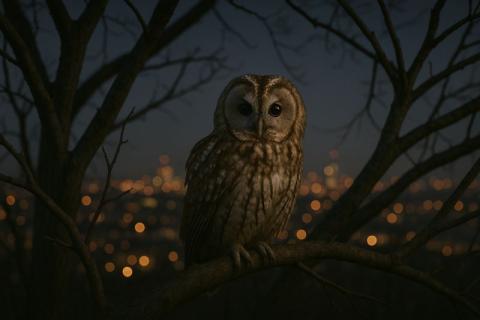Take a proactive local authority, two consulting firms with complementary expertise, and recommendations that can be immediately implemented in the field.
In a short time, you will see concrete changes that benefit biodiversity.
This is exactly what happened a few weeks ago in the town of Saint-Louis, in Alsace.
TerrOïko and DarkSkyLab were commissioned to identify the town's dark sky areas and propose associated public lighting management actions.
In just a few days, the local authority took action to implement several of our recommendations:
- turning off certain lights (from 11 p.m.)
- completely turning off the lighting in a parking lot
- reducing the color temperature of pedestrian path lighting
- installing progressive intensity lighting at the entrance to the city, for a smooth transition between darkness and light, which is more suitable for wildlife but also for human use.
Finding the best compromise between protecting biodiversity, ensuring the comfort of human populations, and enabling local authorities to act effectively at a lower cost is the whole purpose of a dark sky study.
How do we achieve this?
In Saint Louis, as elsewhere, the study began with an assessment of existing light pollution.
Our colleagues at DarkSkyLab first analyzed data from the city's light sources and nighttime satellite images, then identified existing lighting practices, neighborhood by neighborhood. They then used their modeling tools to map both the brightness of the sky and the direct visibility of light sources at each point within the municipality.
We took over to assess the community's natural heritage, combining data on landscape structure (land use), information on observed species, and the protection status of certain areas of the territory, and modeling the life cycles and movements of species with our SimOïko software.
By cross-referencing this data with data on light pollution, we were able to identify the main areas of concern, where lighting is a major obstacle to the continuity of dark infrastructure
The DarkSkyLab teams continued their work by visiting the identified areas at night to complete their assessment of light pollution and draw up a detailed, practical list of recommendations to reduce the environmental impact of public lighting.
This team effort was ultimately completed by the local authority, which implemented the first set of recommendations.
And you know what? Nothing makes us happier!
